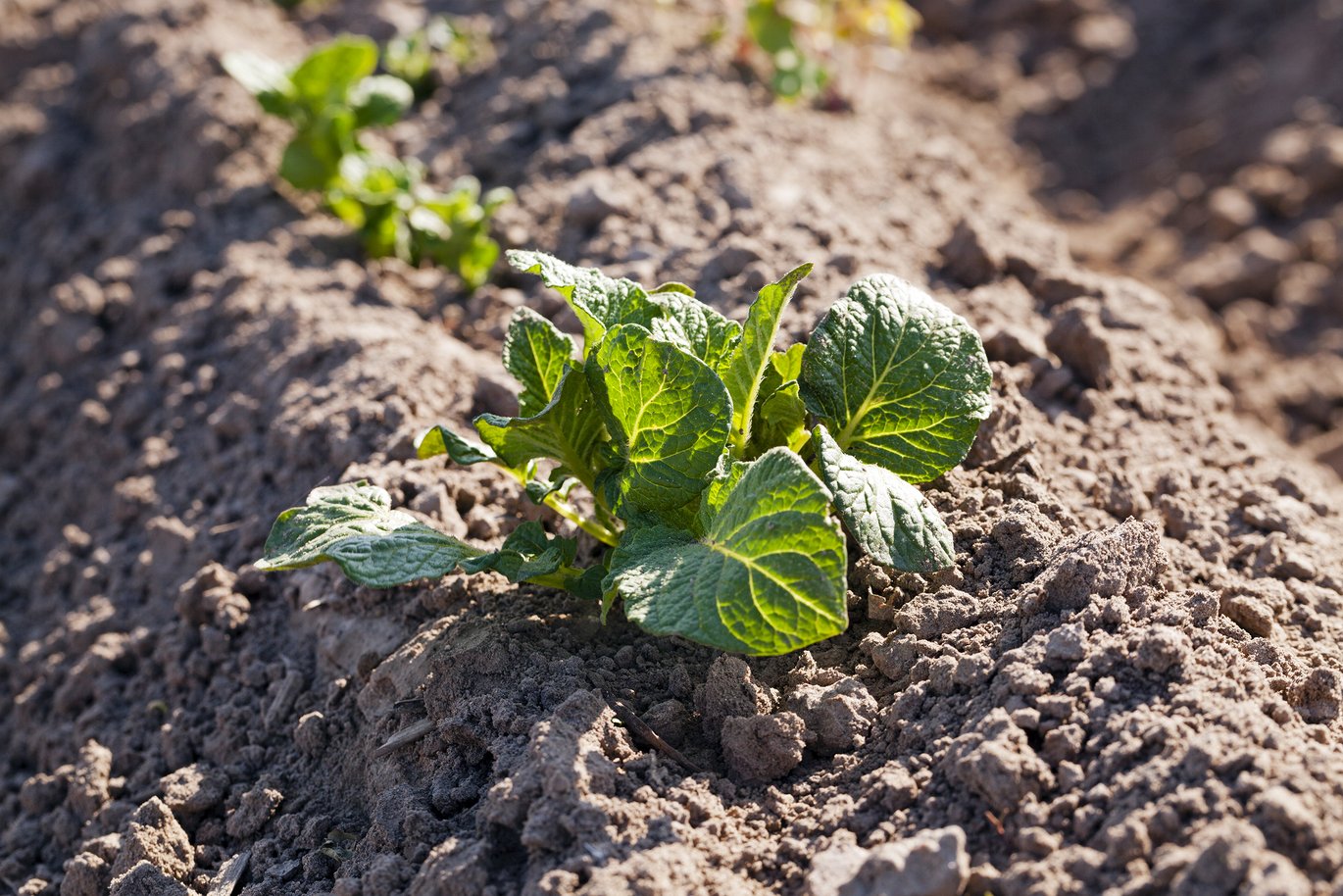Can rotation in potato varieties prolong resistance to late blight?
Potato production worldwide relies on fungicides to control late blight. In a new project, funded by the Novo Nordisk Foundation, researchers from Aarhus University will investigate whether rotation of potato varieties with different forms of resistance could be a future strategy to manage late blight. If successful, this would be a major step towards the EU's goal of halving pesticide use by 2030.

Late blight in potatoes is not only a problem in Denmark, worldwide the disease causes losses of up to $6.7 billion annually. That's why fungicides are widely used to control the disease. It is common practice to spray potato fields weekly or more often when there is a serious risk of infestation.
"This high consumption is unsustainable for environmental reasons and counterproductive to the EU objective of halving pesticide use by 2030. There is therefore an urgent need to find new and innovative ways to reduce the need and consumption of fungicides in potato production," explains Associate Professor Kim Hebelstrup from the Department of Agroecology at Aarhus University.
Together with his colleagues Chris Sørensen and Isaac Abuley, he has just received a grant of almost DKK 3 million from the Novo Nordisk Foundation to investigate the possibilities of genetically controlling late blight in potatoes by combining new breeding techniques with rotation of potato varieties in the field.
Different resistant genes
The project - called "Optimal R-gene rotation in potatoes", or Opti-R for short - builds on the theory of using resistance genes in breeding.
"Where previous theories have suggested pooling resistance genes in the most commonly used potato varieties, we instead want to find an optimal way to rotate between different resistance genes each season," explains postdoc Isaac Abuley from the Department of Agroecology at Aarhus University.
It has been shown that potato fungi quickly adapt to resistance genes, even when several are present at the same time. The theory behind the new project is that if the potatoes have different ways of being resistant each year, the late blight will not have enough time to adapt.
Late blight adapts rapidly to new forms of resistance
"It's called host resistance when the potato plant itself has resistant genes to the fungal disease. It's an effective and environmentally friendly way to keep late blight at bay, as long as it works. If we can maintain this kind of resistance, it alone could greatly reduce reliance on fungicides. It will help meet the EU's Green Deal target of reducing pesticide use in Europe by 50%," says Assistant Professor Chris Sørensen from the Department of Agroecology at Aarhus University.
According to the researchers, late blight has a unique ability to quickly adapt to different resistance genes in the potato plant, making the plant susceptible to disease. This means that many of the resistant genes found in potatoes grown in fields today have been either partially or completely degraded by the disease. Therefore, fungicides are still needed.
Prolonging the effect of resistant genes
"Although we have not yet succeeded in creating a variety that is completely resistant to late blight, host resistance is the way forward for disease control in future potato production. However, this requires us to optimise the use of resistance genes," explains Isaac Abuley, who says that in the past, attempts have been made to stack several resistance genes in each potato variety to boost their effectiveness.
According to the researchers, stacking resistance genes is a promising strategy, but it alone cannot guarantee potato production. This is especially true if the variety is grown with the same resistance genes year after year. Then, over time, late blight will adapt and overcome the resistance, even if there are more of the resistant genes.
"We therefore want to investigate whether the effect of the resistance genes can be prolonged via a so-called diversity strategy. This involves switching between resistant genes every year," he explains.
This means growing a variety with a new type of resistance every year. This way, the late blight will not have enough time to adapt to each resistance and sustainable control of the disease will be easier to achieve.
Resistance rotation can reduce pesticide use
"To put it very briefly, we will try to create a kind of resistance rotation in the potato field, consisting of a mix of known potato varieties bred to all have different kinds of resistance. The aim is to achieve natural control of late blight in the field with new biotechnological breeding methods and thus significantly reduce the need for fungicides," says Kim Hebelstrup.
More information | |
| Collaborators | Department of Agroecology, Aarhus University |
| Funding | Novo Nordisk Foundation |
| Amount granted | 2,999,850 DKK |
| Project duration | 3 years |
| Read more | Novo Nordisk Foundation website |
| Contact | Associate Professor Kim Hebelstrup, Department of Agroecology, Aarhus University. Tel: +45 87158271 or mail: kim.hebelstrup@agro.au.dk Postdoc Isaac Kwesi Abuley, Department of Agroecology, Aarhus University. Mail: ikabuley@agro.au.dk Assistant Professor Chris Khadgi Sørensen, Department of Agroecology, Aarhus University. Mail: chris.sorensen@agro.au.dk |
